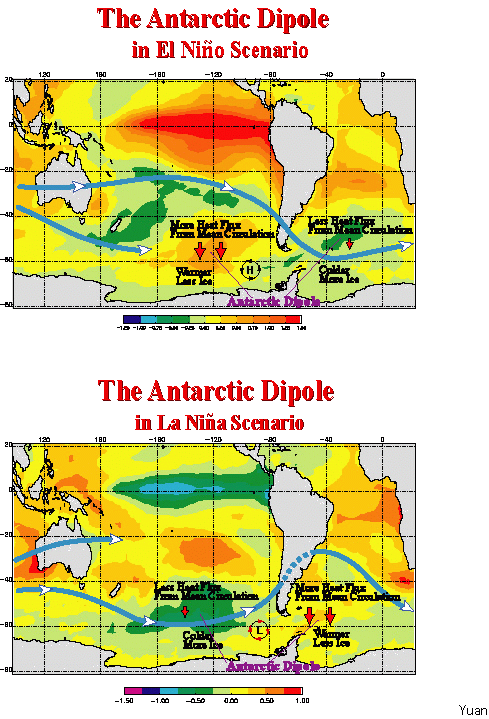Open House

|
El Niño's Footprints in the Polar Seas
|
Dr. Yuan's recent study summarizes what we have known about the Antarctic
Dipole
(ADP) mode in southern high latitudes and associated atmospheric
circulation
patterns. The Antarctic Dipole is a part of ENSO global anomaly and
represents the largest ENSO temperature anomaly outside of the
tropical
Pacific. For warm events, warm temperature and less sea ice occur in
the
Pacific center of the dipole while cold temperature and more sea ice
occurs
in the Atlantic center of the dipole simultaneously. Anomalous
temperature
and sea ice persist a few seasons in high latitudes after tropical
forcing
reach its maximum. A persisting high-pressure center exists in the
Bellingshausen Sea accompanying the dipole anomaly for warm events.
The
subtropical jet is enhanced and polar front jet is weakened in the
Pacific.
In the same time the strong jet stream swings polarward in the
Atlantic. In
addition, polarward mean heat flux is stronger in the Pacific while
weaker
in the Atlantic. The La Niña scenario is just a mirror image of the
El Niño
scenario (Figure 1).



